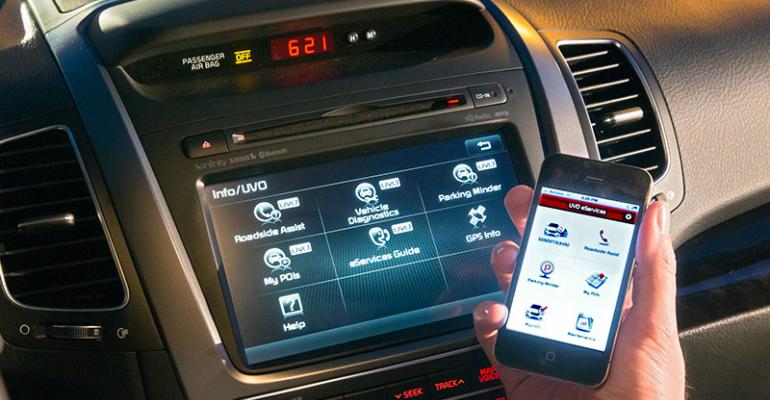NOVI, MI – Telematics systems are becoming as common as steering wheels or seats, which is to say commoditized.
So the auto industry is debating what the future holds for the information, entertainment, safety and services feature, and whether there are lucrative new frontiers to explore.
Many at the 2014 Telematics Update conference here Wednesday see the growing amounts of data generated by vehicles leading to known and unknown business opportunities for automakers and suppliers.
“More-connected cars is going to equal more data, it’s inevitable,” says Scott Frank, vice president-marketing for software provider Airbiquity.
With the amount of data generated from vehicles growing by a factor of 100, he says there is a prime opportunity for automakers to capture, analyze and contextualize that data, turning it into valuable information.
For instance, Frank cites a recent need to get a new tire on a vehicle he owns. He bought the tire from a Goodyear store, but says had his car’s diagnostic system been able to communicate the need for a new tire to a dealer selling his make, it could have been a business opportunity for the dealer and a customer-satisfaction win for the automaker.
Another way in which data collected by an automobile’s telematics system could provide value, Frank says, is in showing which components of the vehicle are and aren’t performing well. Automakers could use this data, collected by onboard sensors, to refine their supply chain, he posits.
To be successful in those two instances, OEMs must develop the ability to analyze and contextualize data on the fly, instead of sticking to rigid report timing.
Some business opportunities exist now with easily gleaned data. For instance, Frank notes a key marketing opportunity by examining Airbiquity user-transaction data, which showed users stepped up downloads of the iHeartRadio app from December 2013 to April 2014.
“We want these systems to get used (after all),” Frank says, inferring the possibility for an app provider to use this data to either increase penetration of their own product or counter the growing popularity of a competitor’s offering.
Back to Basics Approach
Phil Abram, chief infotainment officer-General Motors, says one of the key things automakers can do to set a future growth path for telematics adoption is to stop talking about the technology behind it.
“If our customers talk about technology, we’ve screwed up,” he says. “I don’t think people care at all about the ‘connected car,’ (but they do care if their car can) ‘make me safer.’”
He says right now the auto industry is “horrific” at showing car buyers how telematics systems can be useful.
A future direction for Kia is “going back to the basics,” says Henry Bzeih, chief technology officer-Kia Motors America, examining what it learned in the three years its UVO infotainment system has been on the market.
“We are revisiting everything we’ve done,” Bzeih says. Kia has learned from misfires too, he says, such as thinking an owner could bring his tablet computer in the car. The integration of a tablet with the vehicle proved problematic and neither device would have functioned in the way a customer would expect.
Don Butler, executive director-Connected Vehicles and Services for Ford, sees voice commands as a future growth area for telematics. “(Voice is) super, super important,” both to the industry and his employer, adding incoming CEO Mark Fields is a big booster of telematics.
Butler also says in-car advertising and personalizing the telematics experience could be a growth area for the industry, if done correctly. Customers will give permission for their data to be used to pitch products or services to them so long as they see value in the end result.
“We can never get to the creepy side – we’re dead if we get creepy,” he notes.
Tom Gebhardt, president-Panasonic Automotive Systems Co. of America, says it’s crucial his company, today largely in the hardware side of the telematics business, get to the point of building flexible platforms to enable the tailoring of infotainment to individual users.
Panasonic’s purchase last year of Aupeo!, an online and content-service provider to Internet-connected devices, is a step toward that goal.
Tim Yerdon, director-Visteon, says successful implementation of over-the-air updates is a focus area at his company.
“When we think about the future we think about over-the-air updates, not only how do we get it through the head unit or that initial gateway, but how do we distribute (an update) to other modules that may or may not be Visteon products.”





